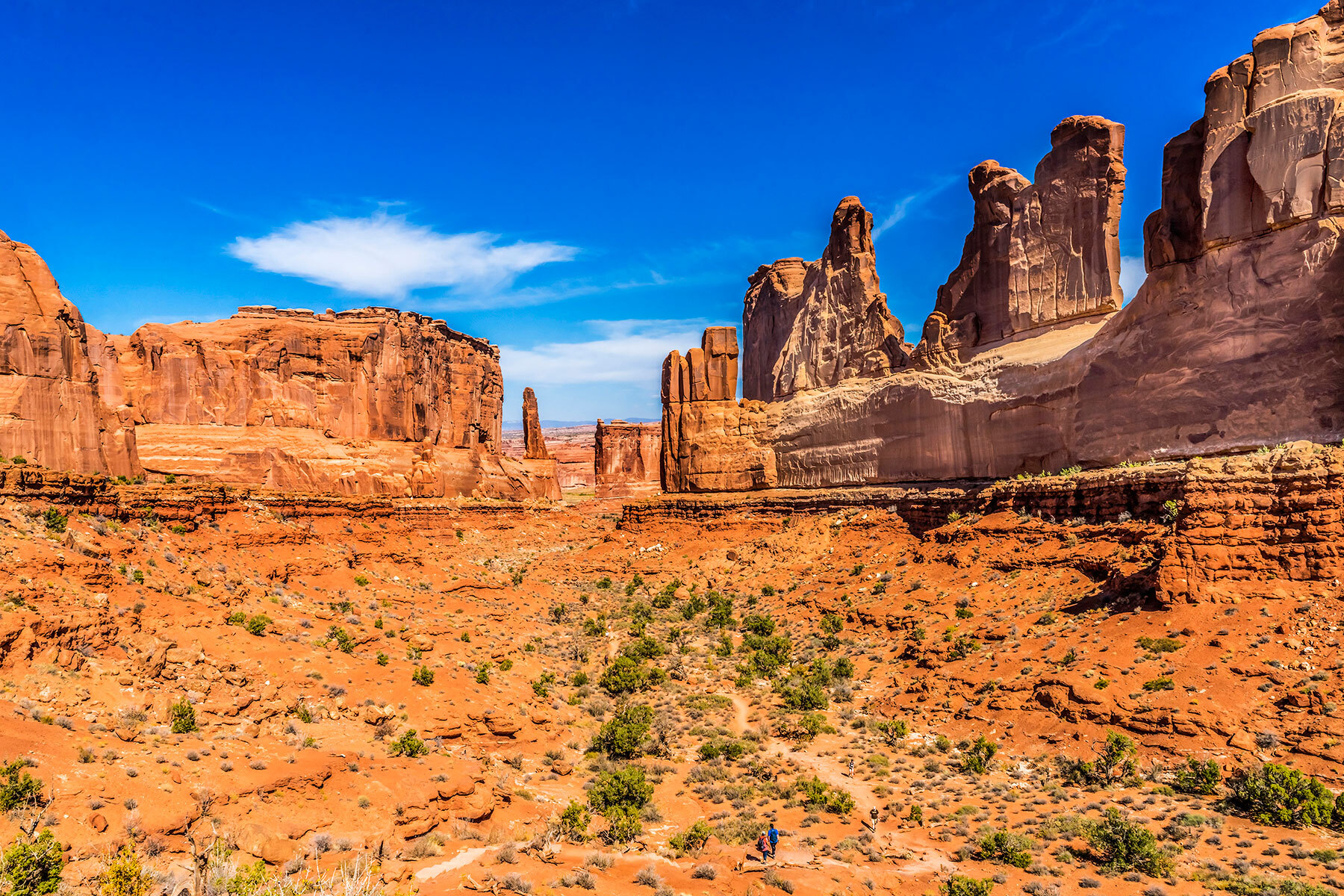Road trip the Rockies on a budget
Of course a tour of the Rocky Mountains is on your to-do list. Whether it’s your first or umpteenth visit to America’s definitive mountain range, there’s always more to see. With that in mind, we’ve curated essential must-sees in Colorado, Utah, and Wyoming that offer red rocks, black rocks, and views for days, along with a manageable itinerary that maximizes the wow factor.
Grand Junction
Your Rocky Mountains road trip begins in Grand Junction, Colorado. The town’s name is a tribute to its location, west of the Grand Mesa, in the Western Slope region with its exceptional wines, and smack in the path of the Colorado River. Before you hit the road, spend some time exploring Grand Junction’s galleries and boutiques, plus one of America’s biggest outdoor sculpture displays. And save time for the Museum of Western Colorado’s history exhibits and dinosaur collection. For something a bit wilder, try rafting the river, with options ranging from gentle to class IV rapids. Grab a bite at Bin 707 Foodbar, which focuses on locally sourced meats and produce. Reliable hotel chains offer rooms starting under $150/night.
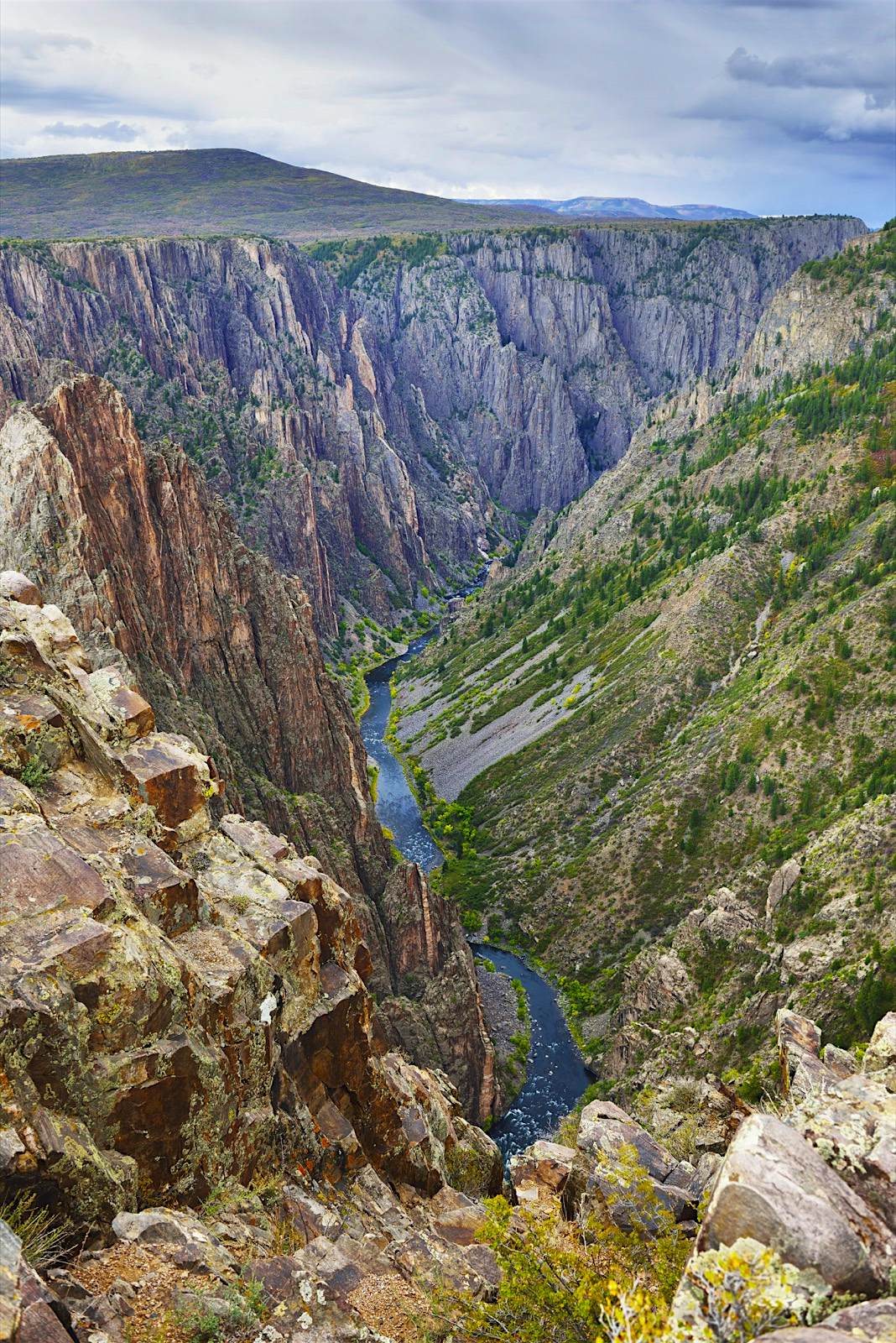 One of the USA's lesser-known national parks, the Black Canyon Of The Gunnison National Park features a steep-sided canyon formed by the Gunnison River © AlexeyKamenskiy / Getty Images
One of the USA's lesser-known national parks, the Black Canyon Of The Gunnison National Park features a steep-sided canyon formed by the Gunnison River © AlexeyKamenskiy / Getty Images
Black Canyon of the Gunnison National Park
From Grand Junction, head east on US-50 for the 80-minute drive to one of the National Park Service’s most sublime “secrets,” Black Canyon of the Gunnison National Park. Here, you’ll discover a world of unique black rock formations rising 2000ft over the beautiful Gunnison River. Stay a day, a week, or more exploring the canyon’s South Rim trails, opportunities for fishing and climbing, and ranger-led programs. The most affordable lodging is found at the park’s campsites; if you choose to camp, first pick up food and water in nearby Montrose. If roughing it isn’t your style, book a room at the Double G Guestranch, in Montrose, with rates starting under $150/night.
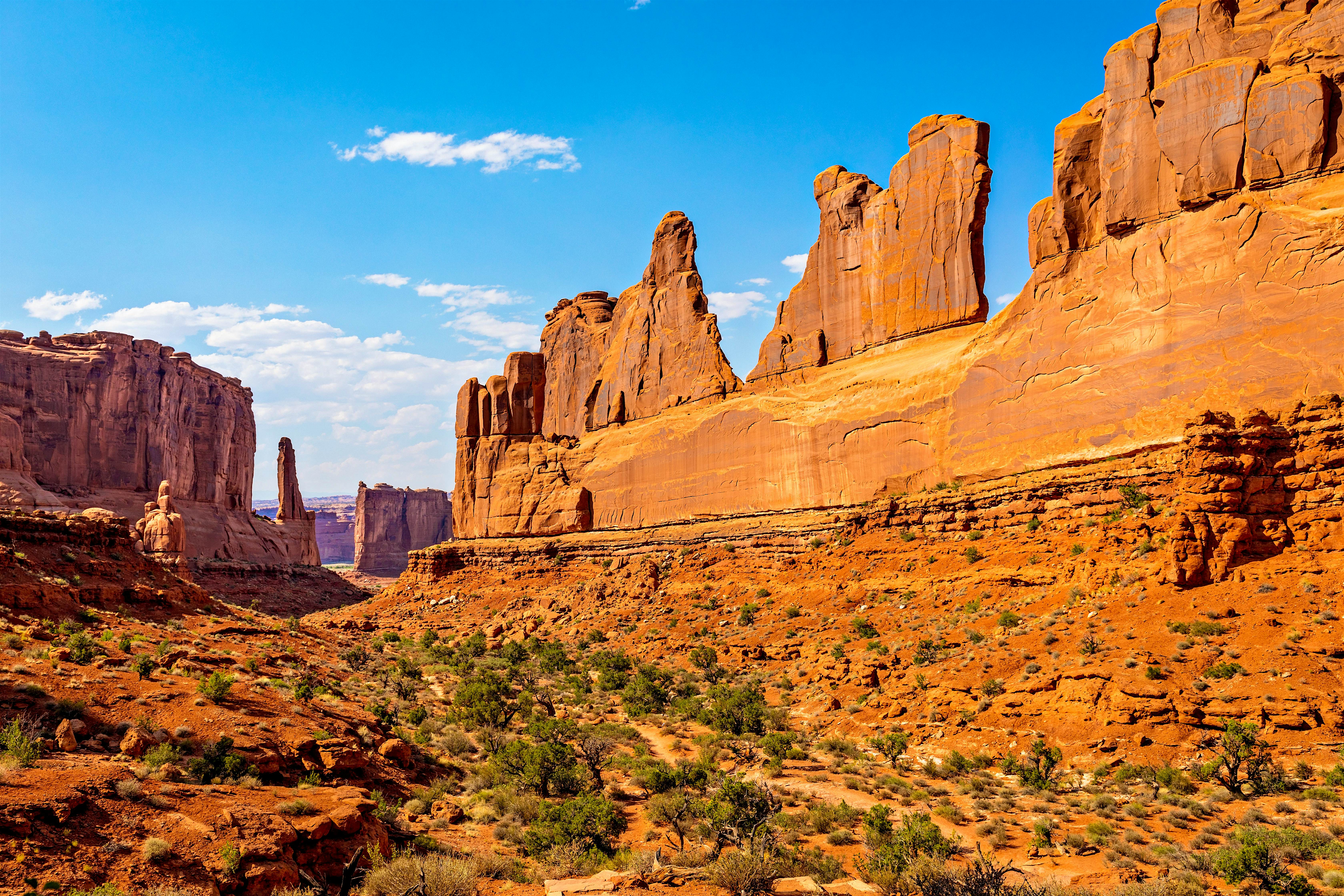 Moab is an excellent jumping-off point for exploring nearby Arches National Park © JFunk / Shutterstock
Moab is an excellent jumping-off point for exploring nearby Arches National Park © JFunk / Shutterstock
Moab
From Montrose, head west on I-70 for the three-hour drive to Moab, Utah. In addition to its own considerable charms, Moab happens to be the gateway to two of Utah’s “Mighty Five,” Canyonlands National Park and Arches National Park. You’ll want to spend plenty of time hiking their distinctive red rocks, and you’ll also reconnect with the Colorado River in Moab. Save some time to discover nearby Dead Horse Point State Park (we promise it’s way more beautiful than its name). Grab breakfast at the Jailhouse Cafe, and unwind at the end of the day at Moab Brewery. Book a room at Expedition Lodge, starting under $150/night.
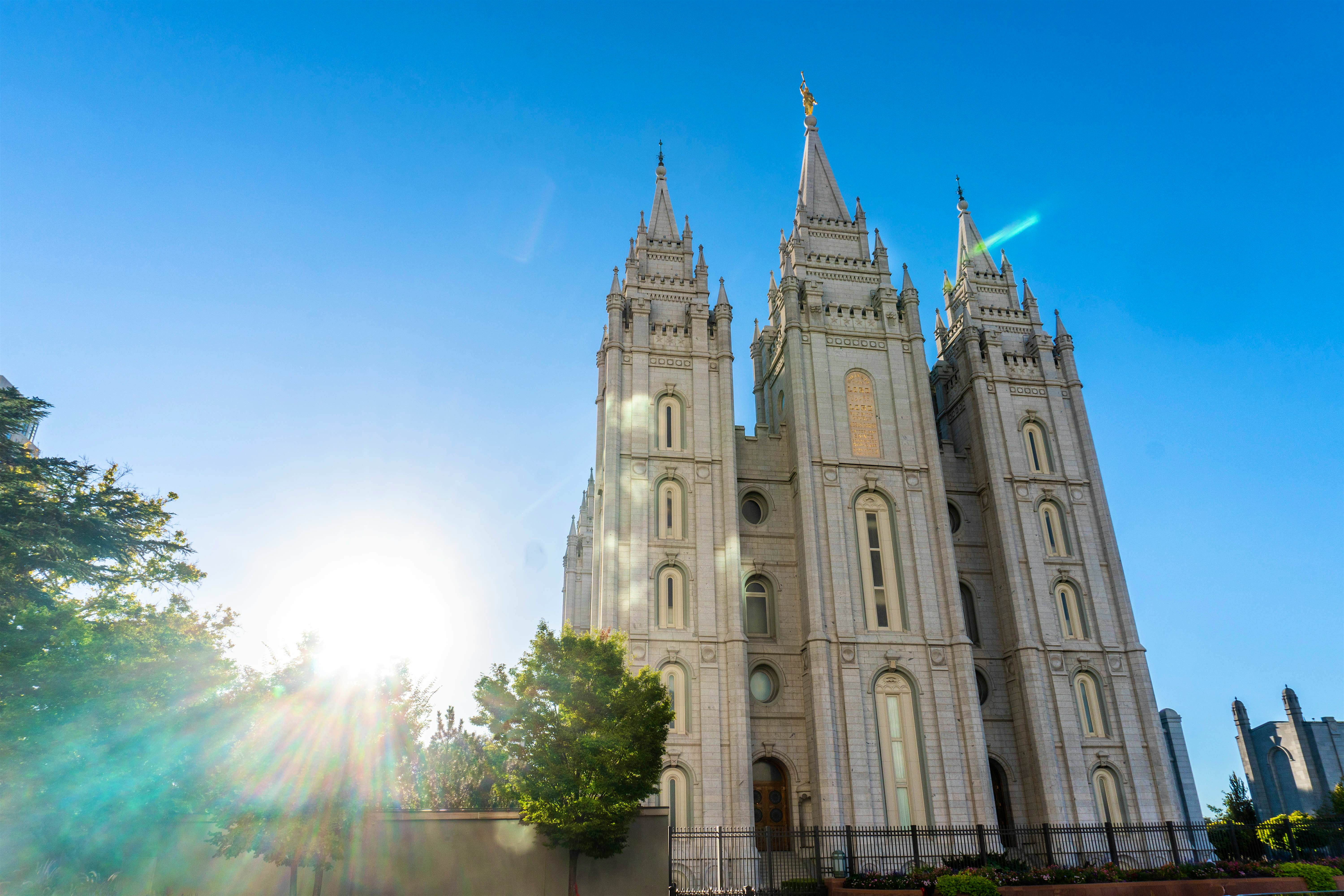 Discover Salt Lake City's unique blend of cultures at Temple Square © Allison J. Hahn / Shutterstock
Discover Salt Lake City's unique blend of cultures at Temple Square © Allison J. Hahn / Shutterstock
Salt Lake City
For a dose of big-city style in the midst of your mountain sojourn, head west out of Moab on US-6 for the four-hour drive to Salt Lake City. A visit here offers such a variety of experiences, you’ll want to customize your itinerary to your personal tastes. Nature lovers will want to continue with their hiking and exploring at Antelope Island State Park, Sugar House Park with its trails and lakes right within city limits, and a day trip to nearby Park City. History buffs will love strolling downtown around Temple Square and learning about the city’s unique cultural mix and stories. Foodies – and, honestly, everybody else – should get a taste of SLC’s culinary scene at Ruth’s Diner with its legendary biscuits (since 1930), and the city’s favorite Mexican eatery, Red Iguana. Great lodging is available at The Kimball at Temple Square starting under $150/night; motel options under $100/night abound near the airport.
 Iconic sites like the historic John Moulton Barn await you in Grand Teton National Park © Paul Brady Photography / Shutterstock
Iconic sites like the historic John Moulton Barn await you in Grand Teton National Park © Paul Brady Photography / Shutterstock
Grand Teton National Park
Before you leave Salt Lake City, pick up a dozen of the justly famous bagels and cream cheese at Bagels and Greens, then head north out of I-15 for the nearly five-hour drive to Grand Teton National Park, Wyoming. The distinctive Tetons will look familiar to anyone who’s seen the classic black-and-white images by photographer Ansel Adams, and capturing the stunning landscapes and wildlife for posterity (or for the ‘gram) is a must. If you want to pay tribute to Adams by attempting to imitate his work, ask rangers for directions to the marker of the exact spot where Adams shot “Tetons and the Snake River,” in 1942. Hungry? The Chuckwagon Breakfast at Dornan’s is legendary, and you can also grab deli sandwiches there. Bunk down at Targhee Lodge in nearby Alta, with rooms starting under $150/night, or book a campsite in the park well in advance of your visit. (And don’t forget you can enter adjoining Yellowstone National Park for no additional fee!)
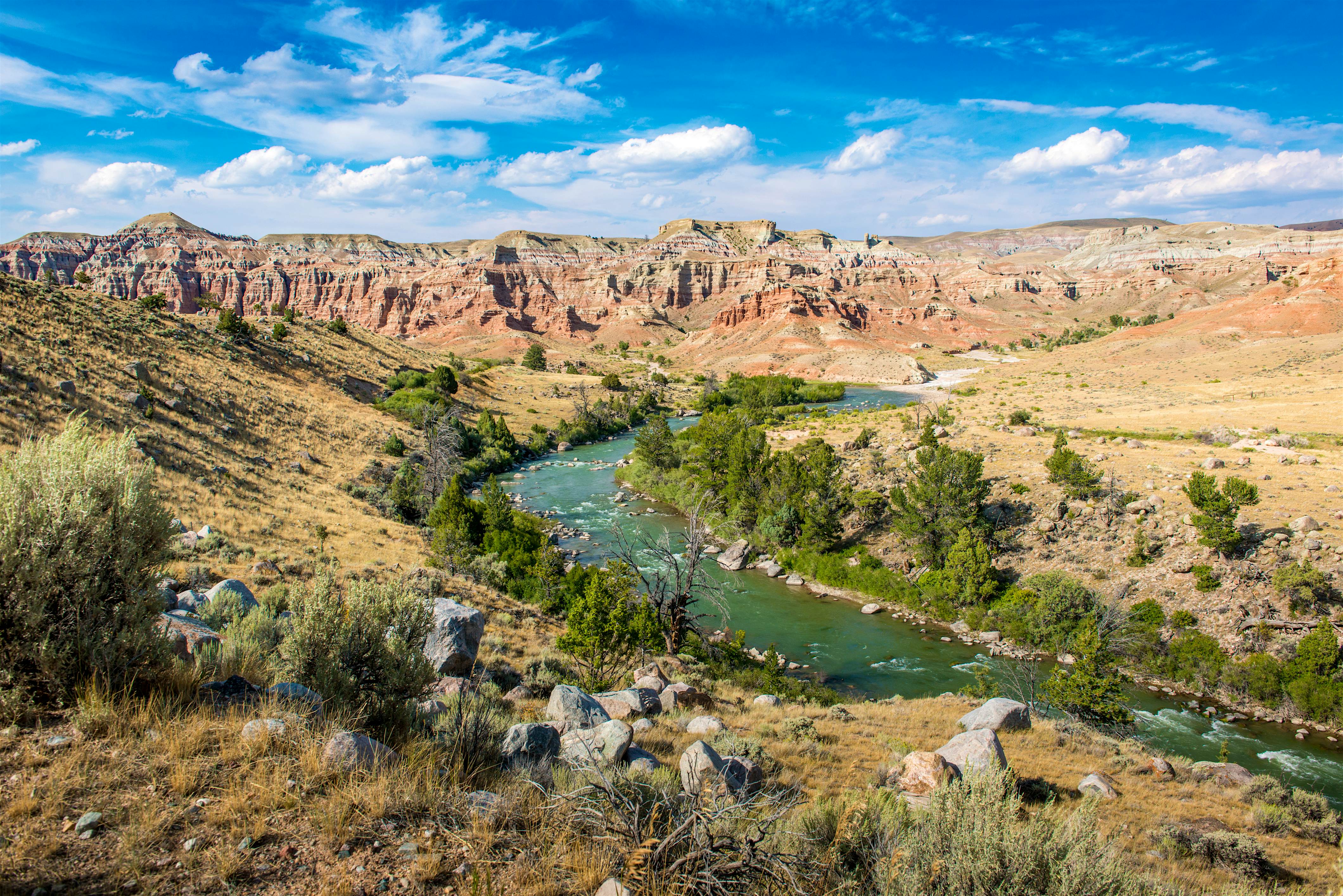 Dubois, Wyoming, is surrounded by spectacular scenery, such as the Wind River © Edwin Remsberg / The Image Bank / Getty
Dubois, Wyoming, is surrounded by spectacular scenery, such as the Wind River © Edwin Remsberg / The Image Bank / Getty
Dubois
From Grand Teton, it’s about an hour’s drive on US-26 East/US-287 South to Dubois. Here, on the Wind River, you’ll find a cool town where Friday nights in summer mean rodeo and any day is a good day to take a wildlife tour of the nearby National Bighorn Sheep Center. Grab a burger at the Cowboy Cafe, and book a room at Stagecoach Inn & Suites for under $125/night.
 The statue entitled "Breakin' Through" that stands in front of War Memorial Stadium at the University of Wyoming in Laramie © C5 Media / Shutterstock
The statue entitled "Breakin' Through" that stands in front of War Memorial Stadium at the University of Wyoming in Laramie © C5 Media / Shutterstock
Laramie
From Dubois, it’s about four-and-a-half hours on US-287 South and I-80 East to Laramie. The Snowy Ridge Range is one of the star attractions in this region of Wyoming, with 12,000ft Medicine Bow Peak just begging to be photographed. Spend some time at the University of Wyoming’s renowned art museum and pay a visit it its geology museum’s allosaurus (“Big Al”), which was discovered outside of Laramie. Fuel up at Coal Creek Coffee & Tap, and get a good night’s sleep (with visions of the Rockies and Tetons dancing in your head) at the Holiday Inn, starting under $125/night.












